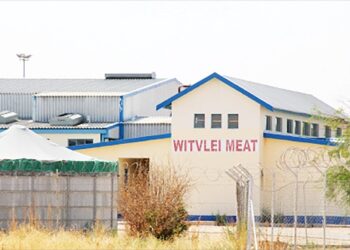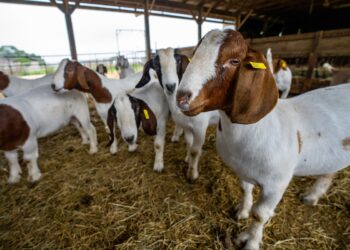
The Agricultural Bank of Namibia says it has disbursed N$284 million in loans to 564 clients for the financial year ending on 31 March. This is a significant increase from the N$194 million reported in FY2022.
“I am encouraged by the sales and collection efforts that are on an upward trajectory, despite operating in a very difficult environment,†Agribank Chairperson, Josephat Mwatotele, said.
Land purchases continued to dominate the agro-lender’s loan allocations, amounting to N$98.2 million during the period under review, covering 134,122 hectares in FY2023, a considerable increase from N$55.1 million and 57,965 hectares in FY2022.
“Loans extended to women increased to N$55.4 million from N$30.1 million in 2022, while youth loans rose to over N$30.6 million in FY2023 from N$20.5 million in the prior year,†the bank said.Â
Livestock purchases also saw a rise, reaching N$76.8 million in FY2023 compared to N$52.2 million the previous year.
Furthermore, full-time communal farmers without collateral received N$25.2 million through the bank’s Emerging Retail Financing Product (ERFP), up from N$12.6 million, while the no-collateral scheme backed by salaries aided employees engaging in part-time farming with N$13.5 million disbursed in FY2023, compared to N$10.1 million during FY2022.Â
“The Bank will focus on strengthening engagements with shareholders, forging strategic partnerships across the agricultural value chains, developing a sustainable funding model, enhancing collection and arrears management, implementing an auctions prevention strategy, aligning product innovation and inclusion, as well as complying with the Public Enterprises’ Governance Act going forward,†Agribank Chief Executive Officer Dr. Raphael Karuaihe said.
Finance and Public Enterprises Minister, Iipumbu Shiimi, commended the bank for playing an active role in the transformation of agriculture by contributing to efforts to remove barriers across the sector’s value chains.
The minister further indicated that his ministry is working on new approaches for the governance of public enterprises, which include the coordinated Board development program for state-owned enterprises, lifting of key performance indicators from strategic business plans, leadership development within SOEs, as well as formalizing a performance culture as some of the key requirements for reporting at AGMs and public enterprise governance going forward.











